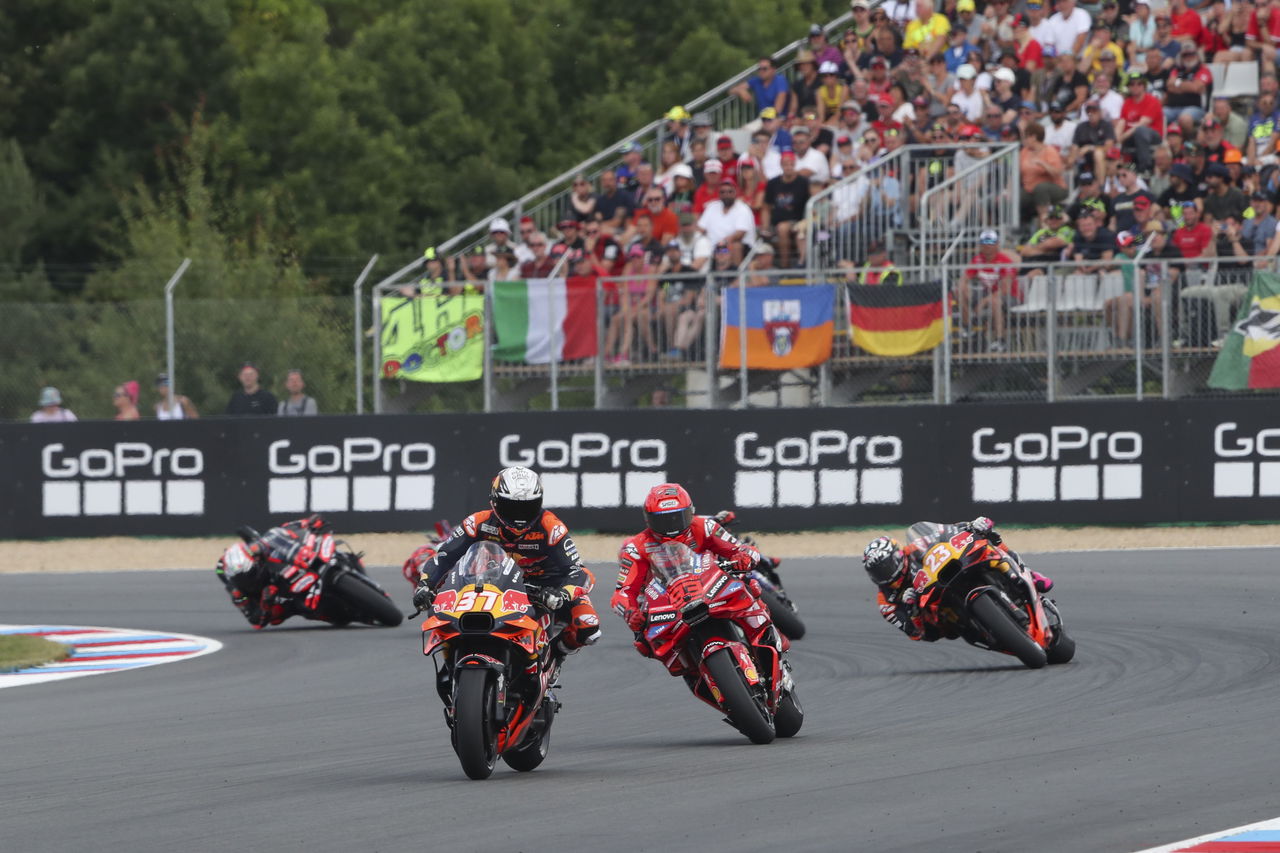MotoGP is going through a highly intense phase regarding the technology and performance on the track. Recent years have seen bike development heavily focused on aerodynamics and ride comfort as manufacturers strive to gain a competitive advantage. However, this has negatively impacted the racing spectacle, as pushing the limits within current regulations complicates overtaking and race dynamics.
For instance, at the 2018 Dutch Grand Prix, despite Marc Marquez’s impressive win, riders found it particularly challenging to make clean passes due to the aerodynamic effects and downforce generated by modern machines. One significant issue is the load placed on front tires caused by increased downforce. Following safety concerns in 2022 about front tire pressure, Michelin advocated for stricter rules, leading to new tire pressure limits being enforced from 2023, but only after mid-season when the Tire Pressure Management System (TPMS) was sufficiently developed.
While the minimum allowed rear tire pressure has been broadly accepted, front tire pressure restrictions initially caused confusion and concern. The limit started at 1.88 bars, reduced to 1.8 bars in 2024, with increased mandates on how long riders must maintain pressure during races. Penalties for breaches have also become more severe, including time penalties during sprints and full Grand Prix races.
Despite these improvements, the core problem persists: engineers must predict tire behavior based on starting grid position and race conditions, which can be unpredictable. This sometimes results in unexpected penalties, like at the chaotic 2024 Spanish Grand Prix sprint, where a rider lost a podium finish due to tire pressure violations caused by unpredictable track conditions. Similar incidents happened at races in Qatar and Thailand, creating frustration among teams and fans alike.
Michelin faces criticism for these regulations, but as the sole tire supplier, it’s under pressure to ensure safety during races watched by millions globally. Attempts to introduce new front tire technology have been delayed and ultimately abandoned, as Michelin plans to exit MotoGP after 2026, with Pirelli set to replace them. Until then, tire pressure rules remain a contentious issue affecting races and championships — notably impacting the 2023 finale where key riders faced penalties for breaches.
MotoGP teams share much responsibility for this situation, having prioritized current season performance over testing new tires meant for future use. Unlike Formula 1, which conducts extensive tire testing with all teams, MotoGP’s limited testing hampers progress. This ongoing situation challenges the sport’s core value: delivering thrilling, quality racing.
Looking ahead, significant regulation changes in 2027 will eliminate ride height devices and aerodynamics, potentially easing tire pressure issues. However, until then, current pressure rules and tire performance uncertainties will continue to affect race outcomes and team strategies. New circuits with fresh asphalt add to the complexity, but teams are expected to adapt without major problems.
Despite these challenges, impressive performances persist—such as KTM’s recent sprint podiums and Jorge Martin’s strong comeback with Aprilia. Yet the tire pressure topic remains a dominant concern. With Liberty Media’s recent acquisition of MotoGP, there’s hope for regulatory improvements, but the inherited complex rules still pose obstacles for the sport’s future.
Fan Take: For racing enthusiasts, these tire pressure regulations are crucial because they directly impact race strategy, safety, and on-track action. Until the sport finds a balance between technology and fair competition, fans might continue to see exciting moments overshadowed by technical penalties and controversies. This ongoing challenge could shape how MotoGP evolves in the coming years.



